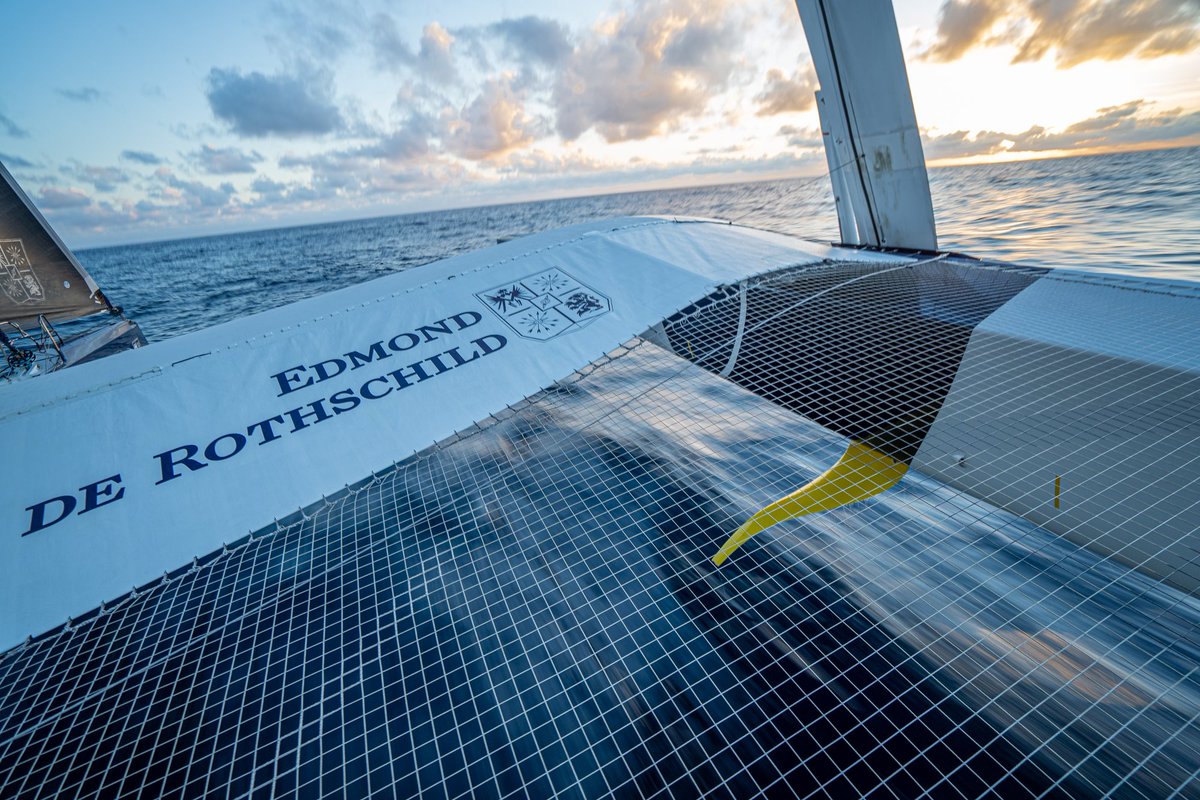Since setting sail off Ushant in the early hours of Sunday 10 January, at 01h 33′ 46” UTC, Franck Cammas, Charles Caudrelier and their four crew have been continuing their descent of the North Atlantic bound for the equator. Having covered nearly 2,000 miles in two and a half days, at an average speed of 31.4 knots, the men of the Maxi Edmond de Rothschild are nicely into the swing of things and, at the 17:00 UTC position report, had even treated themselves to a lead of 139 miles in relation to the record set by Francis Joyon. This third day of the record has been punctuated by a weather transition along the length of a ridge of high pressure associated with the Azores High and the six sailors have had to deal with some very variable winds, which are much too light for their taste, in order to gain headway to the south. However, rest assured that from tonight, there will be a drastic change of scene as the NE’ly breeze is set to flesh out as they approach Cape Verde.

A transition zone bordering a ridge of high pressure
In the week prior to the Maxi Edmond de Rothschild’s departure on the Jules Verne Trophy record attempt, the choice of weather window and the precise timing required to set sail from Ushant fuelled numerous debates within the team’s weather cell. The favoured option represented the best possible compromise for securing a decent time in the negotiation of the North Atlantic and, most importantly, ensuring a good connection in the South Atlantic for hooking onto the low-pressure systems powering down towards the Southern Ocean. The weather situation that the crew of the flying maxi-trimaran have endured for the past 24 hours, namely dying winds which require a great deal of manoeuvring to constantly adapt the heading and point of sail to the variations in the strength and direction of the wind, is directly linked to this slot at the tail-end of the departure window. “We sought to leave Ushant as late as possible in the weather window for two reasons. Firstly, to avoid the worst of the low-pressure system level with the Iberian peninsula and secondly, to benefit from a favourable weather sequence in the South Atlantic in order to hitch a ride with a low-pressure system rolling out of Latin America and heading down to the Southern Ocean. It is this passage point that is the main driver behind the timing of our departure.” However, the scenario has been clear since the start; this configuration could feature some disadvantages, the main one being the ridge of high pressure encroaching on Gitana 17’s route southwards.
“Conditions have been very fluky since our passage around Madeira and the past day has been largely coloured by a dying breeze – between 12 and 20 knots – with some big shifts in direction and a series of squalls. You can sense the ridge of high pressure sprawling across our wake and to the west of our position”, admitted Charles Caudrelier. “Our choice is not the most optimal for the passage time to the equator as we’re leaving at the end of the slot. However, the equator is not our priority, the Jules Verne Trophy is our objective.”
By linking together a series of gybes and sparing no effort in the process, the six sailors on the boat have still managed to get the best out of their machine whilst maintaining a good speed. This is sure to be a source of satisfaction as dusk falls on this third day of the record, especially given that the gateway to the trade wind of the northern hemisphere is not far off now. As such, a much meatier NE’ly breeze is soon set to fill the sails of the Maxi Edmond de Rothschild. Indeed, from tonight, the pace will pick up considerably aboard the latest Gitana as she makes towards Cape Verde. Santo Antão, the most northerly island of the archipelago, should be astern of them by around midday tomorrow, Wednesday 13 January.


